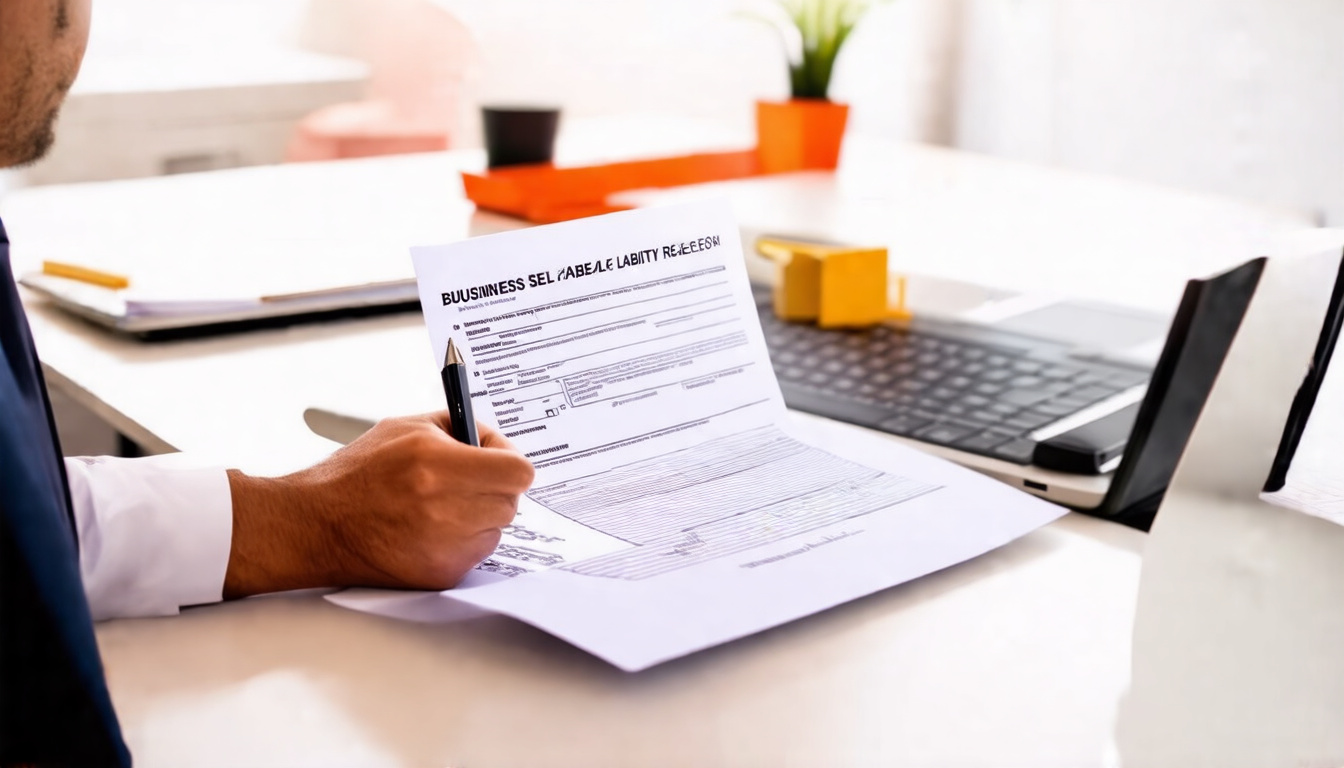When running a business, you must protect yourself from legal claims. A liability release is one tool that minimizes risk. This legal paper links your business to its customers and sets clear duties. The words connect closely. They form a chain where each term links with the next. In this article, we show what a liability release does. We explain why it matters and how you add one to guard your business.
What Is a Liability Release?
A liability release is a legal link between a business and its client. Sometimes, it is called a waiver. When a customer signs it, they give up the right to sue the business if harm occurs during a service or use of a property.
The release has two main roles:
- It informs the participant of possible risks.
- It limits the business’s legal duty if an accident occurs.
Many industries use liability releases. Think of fitness centers, events, outdoor adventures, and construction. In each, risk stays near the words that bind the agreement.
Why Is a Liability Release Important for Your Business?
Without a clear liability release, a business might face expensive claims in court. Even if you act rightly, risk exists and accidents happen. A liability release works by:
- Reducing legal exposure: The customer signs to accept risks, which lowers the chance of a lawsuit.
- Clarifying duties: It shows what tasks your business must handle and what risks the customer takes.
- Building trust: Customers know the risks before they act.
- Promoting care: By stating risks, safer behavior becomes more likely.
This legal tool defends and explains. It builds a bridge of clarity between business and customer.
Key Elements of an Effective Liability Release
A strong liability release must work in court. To do so, it needs clear parts. The key words and links must show:
- Clear, plain language: Use words that connect without detours.
- Identification of the parties: Clearly name the business and the customer.
- Description of the service or activity: Explain what the release covers.
- A risk list: Tell what hazards exist.
- A claim waiver: State that the customer drops the right to sue.
- Risk assumption: The customer takes on the risks.
- An indemnification part: The customer may pay the business if a claim starts.
- Signatures and dates: Both sides add their mark and the date.
Keep the words tight and adapt to your business each time. Generic forms can break in court if words wobble.
Best Practices for Implementing Liability Releases
Holding a liability release is not enough. How you use it matters fast. Follow these steps to protect your work:
- Give the release early: Let customers see the form before they act.
- Use digital or paper copies: Keep each signed form stored safe.
- Explain the words: Tell what the form covers and why it matters.
- Avoid forcing a signature: The customer must sign on their own.
- Check it yearly: Change the words if laws or duties change.
- Talk with a lawyer: Get advice so the words meet state law and industry need.
Each practice tightens the connection between words, making the protection stronger.
Situations Where a Liability Release Is Crucial
Use a liability release when risk sits close to the activity. Examples include:
- Hosting adventures such as zip-lining or hiking tours.
- Running fitness or wellness centers.
- Holding classes or workshops with physical tasks.
- Renting tools like vehicles or gear.
- Providing services with natural risks, like construction or repairs.
In each situation, short, clear links between words keep risk and responsibility near each other.
Sample Liability Release Clauses
Below we show short clauses that tie words into legal strength:
- Assumption of Risk: “I understand that this activity has risks. I accept risks of injury or property damage.
- Waiver of Liability: “I release and discharge [Business Name] from any liability for my injuries or losses while participating.”
- Indemnification: “I agree to defend and hold [Business Name] harmless if a claim starts from my actions.”
Each clause joins concepts directly, making the connections clear and effective.
Frequently Asked Questions (FAQ)
What is a liability release, and how does it protect my business?
A liability release is a contract. It links the customer to the business. The customer gives up the right to sue when harm occurs. This chain of words lowers legal risk and sets clear roles.
Can a liability release be enforced if an accident happens due to negligence?
Words in the release usually do not cover gross negligence or intentional harm. But for ordinary mistakes, a strong release can lower your risk and block most claims.
How often should I update my liability release forms?
Change the words at least once a year. Also, update them when your business adds new services or laws change. Keep the connections clear.
Expert Insight
Law experts trust custom liability release agreements. They say each word must match the business activity and follow local laws. The American Bar Association notes that a well-linked liability release not only cuts legal risk but also forms a bond of clear communication. This leads to trust and better relationships.

Final Thoughts: Protect Your Business Today
A clear liability release is smart. It forms a shield that holds off lawsuits while setting clear roles for both business and customer. Take time to write a release that binds words tightly together. Check it often and ensure the customer sees each link.
Do not leave your business exposed. Talk to a lawyer to craft a liability release that fits your unique risks. When words connect well, your business stays safe, trust grows, and your future looks bright.
Take action now: Establish your liability release agreements today and safeguard your business’s future.
Author: Doyle Weaver, Attorney at Law
Home | Estate Planning | Personal Injury | Hill Country Lawyer | Terms of Service | Privacy Policy
© 2025 Digital Law Firm, P.C.
Disclaimer: The content provided in this blog is for educational and informational purposes only. It is not intended to constitute legal advice or establish an attorney-client relationship. The information presented does not address individual circumstances and should not be relied upon as a substitute for professional legal counsel. Always consult a qualified attorney for advice regarding your specific legal situation. The author and publisher are not liable for any actions taken based on the content of this blog.

Leave a Reply